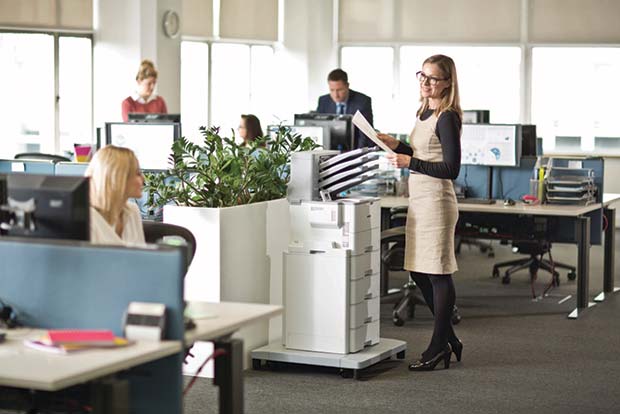Growth continues to slow in the UK grocery market.

According to data from market analyst Kantar Worldpanel, supermarket revenues grew just 1.1% in the year to March 2016 – the lowest level for at least 12 years.
There is agreement among many commentators that the cause of this slow growth is intensifying price competition among the supermarkets, resulting in a significant slowdown in price inflation.
Against this backdrop, it’s clear that the only way for major supermarkets to protect and grow their profit margins is to get more efficient, and finding savings has become a higher priority than ever before.
Mike Mulholland, head of services and solutions at print solutions and services provider Brother, believes technology will play a leading role in keeping running costs under control. “To stay ahead in today’s market conditions, large multiple retailers need to look at the way every aspect of their business operates and work on finding marginal gains wherever they can”, he said. “There are a lot of overheads that are built into the costs they need to charge consumers in order to make a profit, and every single one of these needs to be properly understood and questions asked as to whether savings can be made.”
“The national scale of supermarket operations means that even small daily savings can add up to significant amounts if they can be replicated across hundreds of locations”, Mike continued. “But the starting point is being able to identify where the potential savings are, and this means employing technology to capture data.
Whether it’s the energy consumption of heating, air conditioning and refrigeration systems, the number of road journeys being made in the supply chain and even the usage of office consumables.
“Once you have a detailed picture of usage levels, then you can target any pockets of inefficiency and work towards optimising processes at every location across the network.
Technology is also the key to achieving this, allowing you to put in place well designed systems that make employee’s lives easy while also ensuring business goals are met.”
The challenge of consistency Brother’s area of focus is on controlling print costs by helping retailers to manage the function across their estates.
The business believes that retailers’ print costs are often higher than those of similar sized businesses in other sectors because of both the geographic distribution over which they operate and the volume and variety of printed material they often produce.
Mike continued: “The way major multiple retailers operate, with one or two central offices normally supporting a large number of sites across the country, means that back-office operations can be more difficult to monitor and manage than is the case with businesses whose employees are all based in one large location. Ensuring uniformity of working practices across this kind of estate can be a challenge, and this can mean excessive levels of unnecessary printing and poor technical support, both of which result in additional costs.

“What makes the challenge even greater is that the printing needs of retailers are often more complex than those of a typical administrative office. As well as traditional materials like invoices and accounting documents, they also typically produce a range of customerfacing media such as labels and signage on-site. Ensuring the system that produces this collateral works reliably and delivers consistency from location to location is paramount.”
The network approach In order to tackle the twin challenges of printing efficiency and consistency, Brother believes the best approach for retailers is to implement multisite managed print services (MPS), outsourcing responsibility for printer monitoring, maintenance and technical support to a third-party supplier.
Mike said: “Using a networked printer system allows printer usage and consumable buying to be centrally monitored so that the least efficient locations can be identified and solutions put in place. MPS agreements will also often include creation of bespoke software interfaces to guide employees efficiently through the process of printing whatever assets they need to create.”
And the benefits Brother claims MPS can deliver do not stop with cost efficiency and consistency – in fast-moving markets, a rapid and reliable printing function can also play a key role in keeping pace with competitors. As Mike puts it: “Increased competition in the market means prices have become more dynamic, so it’s vital that retailers are agile in their printing of in-store media.”
Looking to the future, there’s an argument that stores may move towards a paperless approach where digital price displays and signage takes the place of paper collateral.
However, we are still a long way from this being the case. In the meantime, Brother believes retailers should think carefully about their print functions and consult with an MPS provider to audit the way printing is being carried out at shop-floor level.
Mike added: “In today’s retail environment, only those who are able to make marginal gains across every aspect of their operation will be able to get ahead, and print technology could be a good place to start.”




Comments are closed.